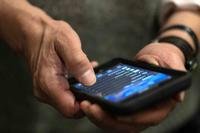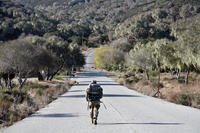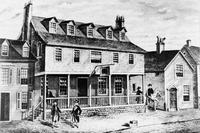The Army is now issuing the Individual First Aid Kit II, a more complete kit that includes more trauma gear, a new eye shield and a more streamlined pouch.
The IFAK II contains all the supplies of the old kit, with the addition of a second tourniquet, a tactical combat casualty card to annotate what kind of first aid was applied to a wounded soldier, a marker, an eye shield, a rubber seal with a valve for sucking chest wounds, and a strap cutter.
One of the bigger changes to the kit is it now includes an eye shield. The small, curved aluminum disk with padding on the edges is designed to be placed over a soldier's wounded eye. The shield is meant to keep pressure off a wounded eyeball when a soldier's injured head is subsequently wrapped with bandages.
"The eye shield is an addition, above and beyond what was in the IFAK II," Maj. Peter Stambersky, assistant product manager of Soldier clothing and individual equipment at Program Executive Office Soldier, said in a recent press release. "Eye shields are on the battlefield now in the Modular Lightweight Load-carrying Equipment medic set and in the combat lifesaver bags. But now every soldier has one, to prevent further injury to the eye socket and to the eyeball."
The Army medical community had identified that eye injuries were not being treated with an eye shield, "which is the appropriate immediate treatment," said Dr. Robert Mazzoli, an ophthalmologist and retired Army colonel.
The Army has also added the Tactical Combat Casualty Care card and a small Sharpie marker to the kit.
"What you would do if you found me on the battlefield and you applied a tourniquet to me is you would write that on this card and attach this to my body," Stambersky said. "In the old days, the technique was to take blood and write 'T' on your forehead. But that will get smudged with sweat or water; it'll rub off."

The IFAK II now comes inside a custom pouch that can be mounted out-of-the-way on the back of a Soldier's Improved Outer Tactical Vest. The original IFAK was built into a squad automatic weapon pouch.
The pouch has "US IFAK" printed on its rear, so soldiers may easily identify its contents, Stambersky said. The individual tourniquet pouches also contain customizable, removable tabs that allow soldiers to hand write their blood type or unit on the kit.
While the new first aid kit can be mounted on a soldier's back, it is designed to be easily accessible when needed for both right-handed and left-handed soldiers.
The IFAK II can be removed from its container pouch from either side by pulling on one of two tabs and slipping it out of its case. The tabs also have small "flaps" on them, so that when a soldier is reaching for the kit, he can get some tactile feedback that lets him know he is pulling on the right tab, Stambersky said. When removed, the foldable kit remains attached to the pouch by an elastic tether.
The kit also comes with two removable tourniquet pouches that can be mounted to anywhere on a soldier's kit. Pouches inside the IFAK II are left empty so that soldiers may also be issued QuickClot Combat Gauze when they receive their kit. The gauze, due to its shelf life, is not distributed with the kits.
The kit is now in Afghanistan in small numbers, as part of a previously initiated limited user evaluation involving 4th Brigade, 3rd Infantry Division, out of Fort Polk, La. In September, units at Fort Bragg, N.C., received the kits through the Rapid Fielding Initiative in advance of their own deployment.









